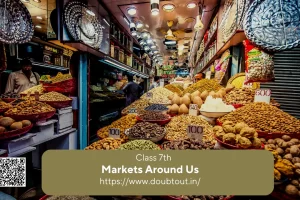
NCERT Solutions for Class 7 History Chapter 3 The Delhi Sultans

When did Delhi gain significance as a centre of strategic and political importance? Who were the rulers of Delhi during the medieval period? Learn answers to these questions and further details about Delhi Sultans and related concepts from Chapter 3 of CBSE Class 7 History. NCERT Solutions for Class 7 History Chapter 3 “The Delhi Sultans” covers solutions to the exercises given in the textbook “Our Pasts-II”.
1. Which ruler first established his or her capital in Delhi?
Answer: Ananga Pala (Tomaras) of the Rajput Dynasty first established his capital in Delhi.
2. What was the language of administration under the Delhi Sultans?
Answer: The language of administration under the Delhi Sultans was Persian.
NCERT Solutions for Class 7 History Chapter 2 New Kings And Kingdoms
3. In whose reign did the Sultanate reach its farthest extent?
Answer: During the reign of Muhammad Tughluq, the Sultanate reached its farthest extent and marched across a large part of the Indian subcontinent. They defeated the rival armies and seized several cities. The Sultanate also collected taxes from the peasantry and dispensed justice in its realm.
4. From which country did Ibn Battuta travel to India?
Answer: Ibn Battuta was a fourteenth-century traveller who came to India from Morocco, Africa.
5. According to the “circle of justice”, why was it important for military commanders to keep the interests of the peasantry in mind?
Answer: According to the “circle of justice”, it was important for military commanders to keep the interests of the peasantry in mind because the salaries of the military commanders came from the revenue collected from peasants. However, the peasants were able to pay their revenue only when they were prosperous and happy. Thus, the military commanders promoted justice and honest governance.
6. What is meant by the “internal” and “external” frontiers of the Sultanate?
Answer: The “internal” frontiers of the Sultanate means the consolidation of the hinterlands of the garrison towns. During these campaigns, forests were cleared in the Ganga-Yamuna doab, and hunter-gatherers and pastoralists were expelled from their habitat; these lands were handed over to the peasants. They also promoted regional trade through the establishment of New fortresses and garrison towns.
The “external” frontiers of the Sultanate meant the military expeditions into southern parts of India, which started during the reign of Alauddin Khalji and ended with the reign of Muhammad Tughluq.
7. What were the steps taken to ensure that muqtis performed their duties? Why do you think they may have wanted to defy the orders of the Sultans?
Answer: The muqtis or iqtadar was a military commander appointed by the Khalji and Tughlug monarchs as governors of territories of varying sizes. These lands were called ‘Iqta’. The duties of the muqtis were as follows:
a. To lead military campaigns and maintain law and order in their iqtas.
b. The muqtis had to collect the revenues of their assignments as salary in exchange for their military services and had to pay their soldiers from these revenues.
c. Control over muqtis was most effective if their office was not inheritable and if they were assigned iqtas for a short period of time before being shifted.
“WATER POLLUTION: CAUSES, IMPACTS, AND SOLUTIONS FOR A CLEANER ENVIRONMENT”
d. Accountants were appointed by the state to check the amount of revenue collected by the muqtis. Care was taken that the muqti collected only the taxes prescribed by the state and that they kept the required number of soldiers.
8. What was the impact of the Mongol invasions on the Delhi Sultanate?
Answer: Mongol attacks on the Delhi Sultanate increased during the reign of Alauddin Khalji and in the early years of Muhammad Tughluq’s rule. Both Alauddin Khalji and Muhammad Tughluq constructed a new garrison town for their soldiers and collected tax from lands between the Ganga and Yamuna to keep the soldiers fed. Alauddin chose to pay his soldiers in cash rather than iqtas, whereas Muhammad Tughluq used a token currency made out of cheap metals.
Tag:Class 7th, History, Social Science



